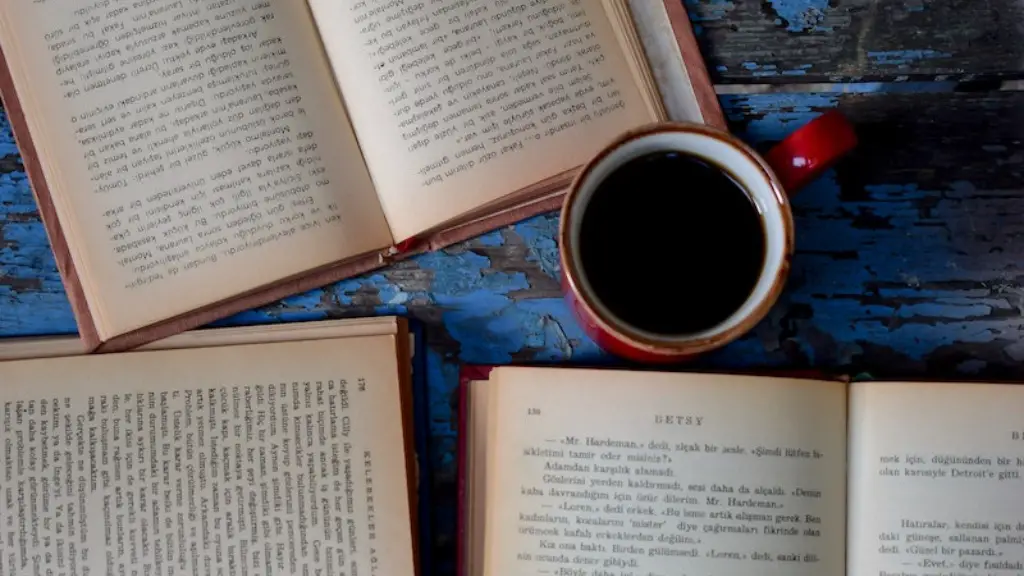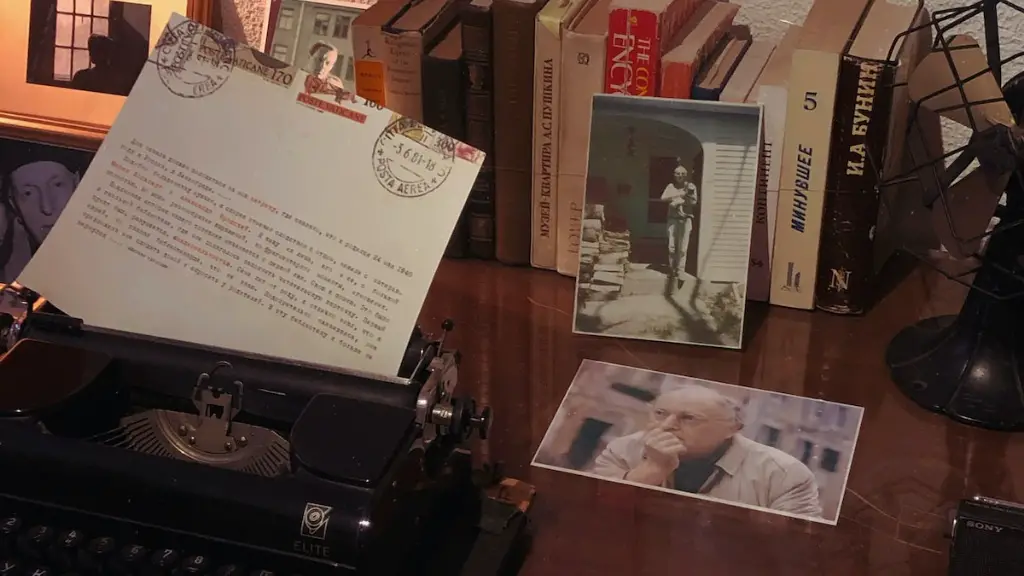What is Narrative Poetry in Literature?
Narrative poetry is a form of literary expression that conveys a story or tells a tale. Unlike lyrical poetry, which describes emotions or ideas, narrative poems contain an entire story from beginning to end; some narrative poems can be as long as a novel. Narrative poetry has been a part of human expression since antiquity, and it has experienced a surge in popularity in recent years.
History of Narrative Poetry
Narrative poetry has been around since the dawn of civilization; ancient oral poets used the form to convey historical events, folk tales, and religious stories. As literature evolved and written techniques were developed, some of these oral stories were transcribed into narrative poems. Epic tales in ancient times were often poems, such as Homer’s Iliad and Odyssey.
The earliest known examples of narrative poetry date back to ancient Egypt, around 2400-2100 BC. Many ancient texts, such as the Babylonian Epic of Gilgamesh and the Sumerian Epic of Enmerkar, are examples of narrative poem. Throughout the millenniums, narrative poems were written and passed down from one generation to the next. This form of expression fell out of favor in the 19th and early 20th centuries, as books and periodicals and movies took on the task of storytelling.
In the late 20th century, narrative poetry experienced a resurgence as contemporary poets explored the narrative form as a way to express creative ideas and emotions. Poets like Rita Dove, Robert Pinsky and Donald Hall all employ the narrative form in their works.
Characteristics of Narrative Poetry
Narrative poetry differs from other types of poetry in several ways. The most obvious is that the poem contains a story, which is typically told in chronological order. It typically features characters, setting, and a plot, and it follows the same structure as a short story. Narrative poems may contain elements such as dialogue, flashbacks, and suspense, and they often employ literary devices like figurative language and symbolism.
Narrative poetry is often written in verse. While the poem may contain lyrical elements, the focus is on telling a story, not conveying emotion. Narrative poetry is typically written in a specific meter and rhyme scheme, though free verse is sometimes used. Traditional narrative poems were written in couplets or quatrains, with each line containing a specific number of syllables.
Types of Narrative Poetry
While there are no rules defining what constitutes a narrative poem, there are a few specific types of narrative poetry that have been around for centuries. The most common is the epic poem, such as Homer’s Iliad or the Arabian Nights. Epic poems are long narrative poems that tell the tale of a heroic adventure.
Ballads are brief narrative poems that tell a story in a song-like format. They originated in the 16th century and often feature a protagonist that undergoes a moral transformation. Many popular songs are ballads. Folk tales, legends, and mythologies are all often written in narrative form as well.
Writing Narrative Poetry
Writing narrative poetry requires a great deal of skill and creativity. It takes a special kind of writer to be able to craft a believable and engaging tale in a short amount of words. While there are no hard and fast rules for writing narrative poetry, there are a few tips and techniques that can help the budding narrative poet.
The most important part of writing a narrative poem is to create a story world that holds the reader’s interest. The story should have a beginning, middle, and end and should contain characters that the reader can empathize with. Each line of the poem should have purpose and forward the story. Imagery and figurative language should be used to evoke strong images and emotions, and the poem should have a distinct theme or moral lesson.
Using Narrative Poetry in the Classroom
Narrative poetry has been a staple of the classroom for centuries, and it has increased in popularity in recent decades. Narrative poems are a great way to introduce students to the concept of storytelling and to foster their critical thinking skills. There are a variety of activities that can help teachers bring narrative poetry into their classroom.
Begin by having students read and dissect narrative poems. Provide them with excerpts of famous narrative poems and challenge them to figure out the story. Once they have a good understanding of the structure and contents of a narrative poem, students can be asked to write their own poems. Encourage students to draw upon their own experience and craft tales that engage readers.
Importance of Narrative Poetry in Modern Times
Narrative poetry is an important form of literary expression that has been around since antiquity. It has the ability to captivate and engage readers, while also conveying a message or lesson. Even in an age when movies and TV shows dominate the entertainment world, narrative poetry can still capture the imagination.
Narrative poetry is also an important tool for teaching, as it can help students to understand the concept of storytelling in an interesting and engaging way. The resurgence of narrative poetry in recent years signals that it is still an important form of expression even in the modern era.
Pratical Uses of Narrative Poetry
Narrative poetry is increasingly being used in practical applications such as therapy and business. Narrative therapy, in particular, has seen a surge in popularity in recent years. It focuses on using stories to trigger emotional reactions, explore experiences, and create new ways of thinking about certain topics. Narrative therapists will often use narrative poems to guide their sessions.
Businesses are also beginning to utilize narrative poems as a way to convey their message and engage customers. Companies are using narrative poems in advertising, branding, and product packaging, and some have even used the form to showcase their corporate values and mission statements.
Analyzing Narrative Poetry
Analyzing narrative poetry is an important skill that often can be difficult to learn. When reading a narrative poem, the reader should pay attention to the structure, setting, characters, and imagery. By looking at how each of these elements are employed in the poem, they will be able to determine the theme and the overall message of the piece.
When analyzing narrative poetry, it is also important to consider the context in which the poem was written. Understanding the cultural milieu in which the poem was written can help the reader to gain further insight into the poet’s intended message.
Incorporating Narrative Poetry into Writing
Narrative poems can be used as an effective tool for communicating a message or story. Writing a narrative poem can help to engage an audience and make them feel a connection to the poet’s words. Narrative poems can also be used to explore difficult topics and situations, often allowing the poet to express things in a way that cannot be done with prose.
Incorporating narrative poems into other types of writing can also help to enhance a story or a message. Spoken word pieces, such as those by David Jessop and Sarah Kay, often feature a combination of narrative and lyrical elements to create powerful pieces of literature.
Narrative Poetry in Pop Culture
Narrative poems have been frequently used in popular culture in recent years. Music has seen a rise in narrative-style songs, such as “Mockingbird” by Eminem and “The Story” by Brandi Carlile. These songs employ the narrative form to tell stories that capture the imagination.
Movies and television shows have also begun to incorporate narrative poems into their storylines. In “The Walking Dead”, a spoken word performance of a narrative poem byJalen Cross called “The Survivors” is used to convey the show’s theme of fighting for survival.
Narrative poetry can also be found in magazines and publications. Several magazines now publish narrative poetry, allowing poets to share their stories with the world. Reading these pieces can help people to gain a deeper appreciation for the form and gain insight into the everyday lives of people from different backgrounds.


